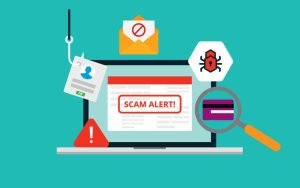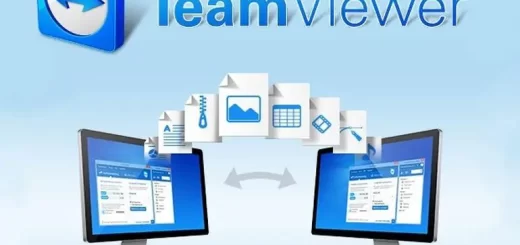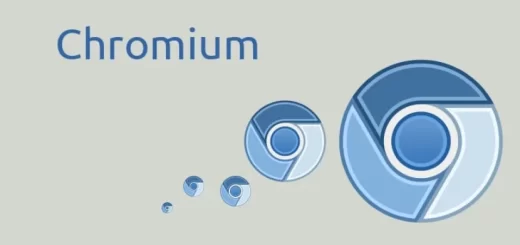Spam email and phishing scam risks and can it be dangerous to open spam emails?
Spam emails are sent out in mass quantities by spammers and cybercriminals who are looking to make money from the recipients who respond to the message, They run phishing scams to obtain passwords, identity details, credit card numbers, bank account details, and more, They spread malicious code onto recipients’ computers.
Spam mail and Email Scams
Spam is the electronic equivalent of the junk mail that arrives on your doormat or in your postbox, although, spam is more than just annoying, It can be dangerous, especially if it is part of a phishing scam, It includes dangerous links, content, or script that can turn dangerous depending on how the users interact with the contents.
Spam mails are electronic unsolicited messages sent to your email address, They are mostly commercial and they may carry malicious content, many countries encourage spamming or they are without any rules to take strict action against the spammers, The spammers always fight back by using ghost ids & change server location frequently.
Spam mails are used for Phishing, They are the main source of phishing attacks, The spam mail may ask an unsuspecting user to reveal sensitive information such as social security number, credit card details, and other personal details, These spam mail achieve this by including interesting subject line & make it look like coming from authorized sources.
Spam Mails do not just annoy the end user, They also interrupt the business productivity, They cause security risks, bringing with them any number of phishing or malware attacks, Because spam Mails are plentiful and they come in many varieties designed to confuse and manipulate the recipient, It is important to first implement a powerful anti-spam system, But utilizing anti-spam software is only a minimum of what you can do to protect yourself.
Spam mails carry malicious downloads, They are equipped with small attachments that look like a zip file, a picture, or a document, If the user downloads the file and clicks on it, The malware program is activated, When the malware is installed, the malware programmer or hacker on the other end can use this malware to spy and extract the information about the unsuspecting user.
Spam mails waste bandwidth space, They consume a lot of bandwidth, This is bad length if you are under download limitations, If all the ISPs around the globe can stop spam mails, it will help them save a lot of bandwidth which lead to increased speed, The overall internet speed all over the globe will increase drastically.
Spam email may feature some warning signs where it contains an urgent offer end date (for example “Buy now and get 50% off”), It contains a request to forward an email to multiple people and may offer money for doing so and you don’t know the sender.
Spam contains misspellings (for example ‘p0rn’ with a zero) designed to fool spam filters, It makes an offer that seems too good to be true, The subject line and contents do not match, It contains a virus warning and it contains the attachments, which could include .exe files.
Spam can contain viruses and spyware, It can be a vehicle for online fraud, such as phishing, Unwanted emails can contain offensive images, Manual filtering and deleting are very time-consuming and they take up space in your inbox.
The spammers obtain your email address when you use automated software to generate addresses, If you entice people to enter their details on fraudulent websites or hack into legitimate websites to gather the users’ details when buying email lists from the other spammers, The spammers obtain your email address if you invite the people to click through to fraudulent websites posing as spam email cancellation services.
The spammers have evolved and are capable of using different tricks to manipulate the viewers to click on links, text files, documents, presentations, images, videos, the screensavers and they can carry malicious code that can be used to infect your device.
These days spam is seen as a necessary evil of having an email address, Much has been done to prevent it from happening on your computer, The computer that is running up-to-date versions of Windows and Outlook won’t have a problem because the most recent software has shut down the vulnerabilities these viruses exploit.
Likewise, updated anti-virus software is ideal protection against viruses and other unwanted malicious software, You have to install Anti-Spam & Anti-Virus Software, One of the most important ways to protect yourself from dangerous spam is to install powerful anti-spam software and intelligent email filtering.
You have to avoid strange attachments or unfamiliar links, The best policy is to refrain from downloading the files or clicking through the links in a strange email, unless you trust the source, Malware, viruses and other types of malicious material can be easily downloaded to your server or computer through the attachments or malicious links.
Phishing is a scam where criminals send emails to thousands of people, These emails pretend to come from banks, credit card companies, online shops, and auction sites as well as other trusted organizations.
They try to trick you into going to the site, For example, to update your password, to avoid your account being suspended, The embedded link in the email itself goes to the website which looks exactly like the real thing but is a fake designed to trick the victims into entering personal information.
Fake emails can look as if they come from a genuine source, They may contain your name and address, The fraudsters become smarter and use new technology, Phishing attacks are attempts to steal sensitive information, The idea is to lead the victim to the website that looks legitimate but is bogus and persuade them to enter their information into it, making it available to the attackers.
Phishing Scams are designed to trick you into disclosing information that will lead to defrauding you or stealing your identity, They are delivered in the form of a spam email (not all spam emails contain scams), email scams are emails offering financial, physical, or emotional benefits, that are in reality linked to a wide variety of frauds.
Phishing scams appear to come from legitimate businesses, like your bank, and contain URLs that link to malicious web pages asking for your private information, Legitimate businesses will never ask for personal information such as passwords or credit card numbers via email, Giving out your information can lead to drained bank accounts or even identity theft.
You can follow science online on YouTube from this link: Science online
You can download Science Online application on Google Play from this link: Science online Apps on Google Play
Simple rules for emailing and How to protect yourself against spam emails




